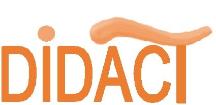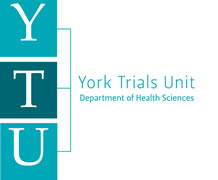DIDACT: Surgery compared with sling immobilisation in the management of adults with a displaced fracture of the distal clavicle: a multi-centre, pragmatic, parallel-group, non-inferiority, randomised controlled trial
Research Question:
In adults with a radiological diagnosis of a displaced fracture of the distal clavicle that does not involve the acromioclavicular joint is sling immobilisation non-inferior to surgical fixation using a patient self-reported functional outcome at 12 months?
Background:
Fractures of the clavicle, primarily occur in young males and constitute 2.6–5% of all fractures in adults. Distal clavicle fractures account for 20-25% of all clavicle fractures. The outer part of the collarbone breaks and separates and these fractures can be called displaced, in that the bones fail to line up. This ruptures the ligaments connecting the collarbone to the shoulder blade (coracoclavicular complex) and can be classified as Neer’s II and V. These are currently treated with an operation involving fracture fixation or with sling immobilisation.
Surgery, where the bone fragments are realigned and fixed into place, may reduce the risk of the fracture not healing (non-union) and may lead to quicker recovery. However, patients treated with surgery are at risk of complications; (estimated at 48%) including infection, plate breakage and refracture after metal removal. A second operation may be required to remove the metalwork due to prominence, leading to a further impact on patients’ lives including work activities and caring responsibilities. Non-operative treatment, using a sling, carries a low risk of complications (15%) and has a relatively low immediate treatment cost. Sling treatment requires a period of immobilization, typically between 2 and 4 weeks, to restrict activities whilst providing comfort during the early painful stages of healing. The risk of the bone not healing (non-union) with non-operative treatment is up to 35-40% but this appears to cause minimal functional deficits in most individuals. If a non-union occurs following sling treatment, and surgical intervention is indicated, it can prolong the treatment period and increase costs.
The study:
The research will be undertaken in NHS major trauma centres in the United Kingdom. Patients will be screened for eligibility (displaced extra-articular (outside the joint) fracture of the distal clavicle based on routine radiographic assessment, with or without polytrauma) and invited for recruitment if the index injury is >21 days.
There will be a 12-month internal pilot to assess the assumptions about site set-up and recruitment. The trial will include a full health economic evaluation. As with many surgical trials, it will not be feasible to blind patients, surgeons, or outcome assessors to the treatment allocation.
Setting:
Major Trauma Centres and Trauma Units within the United Kingdom. Patients will be identified either in the Emergency Department or Fracture Clinic and will attend a routine outpatient appointment at 6 weeks, 3 and 12 months.
Intervention:
Surgery – locking plate fixation, with or without coracoclavicular (CC) sling, or CC reconstruction alone when the distal fragment is very small.
Comparator:
Sling immobilization – upper limb support with a sling, typically for 2 to 4 weeks, followed by surgical fixation if symptomatic non-union of the fracture typically at the 3-month follow-up.
Primary outcome:
Patient-reported functional outcome measured by the Disability of Arm, Shoulder and Hand (DASH) at 12 months.
Secondary outcomes:
- Confirm the feasibility of the study in a 12-month internal pilot to obtain robust estimates of site set-up and recruitment.
- Determine the effectiveness of surgery versus sling immobilisation in adults with a displaced fracture of the distal clavicle.
- Determine the cost-effectiveness of the two treatments to inform the most efficient provision of future care and to describe the resource impact on the NHS.
Planned sample size:
214 (107 in each group)
The trial Sponsor is the University Hospitals of Leicester NHS Trust (UHLT) with funding from the National Institute for Health Research Health Technology Assessment Programme. Mr Harvinder Singh at UHLT is the Chief Investigator.
Materials for trial participants:
Please see below a leaflet called "Advice and early exercise" which is to help patients undertake home exercises.
DIDACT Participant Advice and Early Exercise (PDF ![]() , 617kb)
, 617kb)
Please see below a leaflet called "Sling Use and Initial Self-care" which is to help patients manage their sling care.
DIDACT Participant Sling Use and Initial Self-Care (PDF ![]() , 504kb)
, 504kb)
Please see below a video about undertaking some early exercises as part of your rehabilitation.
Please see below a video about your sling care.
Privacy Notice: How we use your research data
Funding
| Funders(s) | NIHR HTA (NIHR150159) |
|---|---|
| Start Date: | November 2022 |
| End Date: | December 2026 |
YTU Team
External Members
- Harvinder Singh (CI) - Associate Professor, University Hospitals of Leicester NHS Trust (UHLT)
- Amar Rangan - Professor of Orthopaedic Surgery; Mary Kinross Trust and Royal College of Surgeons Chair, South Tees Hospitals NHS Foundation Trust. Academic faculty appointments at the University of York and the University of Oxford.
- Helen Tunnicliffe - Extended Scope of Practice Physiotherapist, at UHLT
- David Annison - Advanced Practice Physiotherapist – Upper Limb, South Tees Hospitals NHS Foundation Trust. NIHR Pre-Doctoral ICA Fellow, University of York




